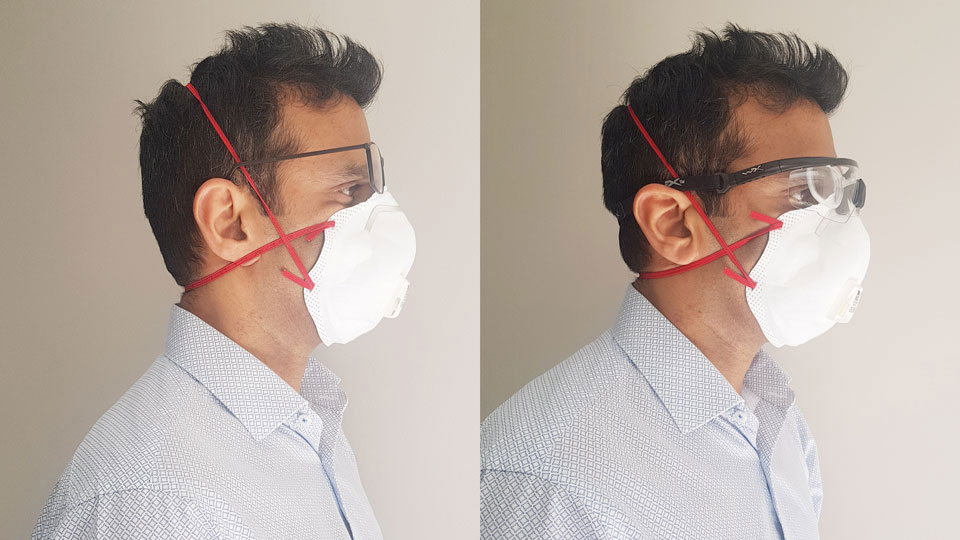- OT
- Life in practice
- Practitioner stories
- "It has given us great satisfaction to be able to help a keyworker"
"It has given us great satisfaction to be able to help a keyworker"
Rupinder Nanda, locum optometrist at Boots Opticians Teddington, shares the steps she took to help her surgeon husband find spectacles to fit around his PPE

07 May 2020
NHS frontline workers are following stringent personal protective equipment (PPE) requirements to keep patients, and themselves, safe whilst delivering care during the coronavirus (COVID-19) pandemic.
Though necessary, frontline workers have highlighted the additional challenges posed by the PPE – such as discomfort or irritation after extended use, while the correct fitting of PPE masks has also caused difficulty for some spectacle wearers.
Rupinder Nanda, locum optometrist at Boots Opticians Teddington, told OT that her husband, Dr Pardeep Kumar, consultant urologist at the Royal Marsden Hospital had found that he struggled to wear his spectacles with his PPE mask.
“Due to the mask being fitted tightly around Dr Kumar’s nose and mouth, his spectacles could not then fit on the bridge of his nose,” Ms Nanda explained.
“The frame sat too high causing him to look through the edge of the lens, causing aberrations and blurred vision. This felt uncomfortable to wear in this position and caused his spectacles to keep falling off when he moved his head down to operate,” she added.
This meant Dr Kumar could not comfortably wear his spectacles while wearing the mask. He told OT: “I also had to wear my spectacles behind a visor and since the spectacles were pushed forward, they kept hitting the visor and steaming up. Not being able to wear my spectacles means I would not be able to operate.”

First considering contact lenses, Dr Kumar ruled these out due to the nature of his working environment. Ms Nanda and Sharanjit Sura, owner and optometrist of the Teddington practice, then discussed frame options, agreeing on a wrap-around sports eyewear with a wider bridge.
“He came into the practice with his PPE mask and tried on the two options we presented,” Ms Nanda explained.
While the optometrists settled on a Bolle Frame, this was not available in the required prescription and the lab instead recommended the Wiley X Saber Advanced Interchangeable single-lens system. The frames come with an insert which was added to the prescription, and also has a tactical strap that wraps around the head.
“Due to the thickness of the mask around his nose, the frames were pushed forwards, increasing the back vertex distance,” Ms Nanda added. “The prescription was adjusted by +0.50 as Dr Kumar is myopic; the vision was accurately checked using a reading chart at the distance he operates at.”
Dr Kumar said this is a common issue for fellow keyworkers, explaining that many are struggling to balance their spectacles over their PPE mask or are wearing contacts. Having received his new frames, he commented: “For me, this is an extension of the PPE. To be able to see clearly and treat patients properly, without having my spectacles falling off.”
“It has given us great satisfaction to be able to help a keyworker during this pandemic to continue to work,” Ms Nanda commented, adding that she hoped sharing the experience would help other optometrists facing similar cases.
“It is important to find out if any patients are struggling to wear their spectacles over PPE masks and if so, to make the adjustments with frame choice and lens prescription alteration to help them continue this important work,” Ms Nanda concluded. She recommended ensuring that any patients who are keyworkers have an up-to-date prescription and have their PPE mask fitted before finding a frame to fit.
Advertisement


Comments (0)
You must be logged in to join the discussion. Log in